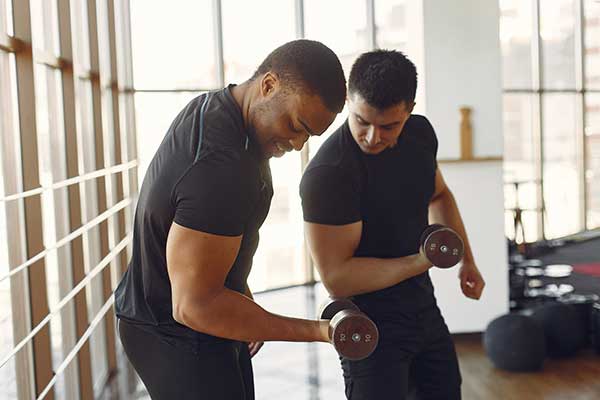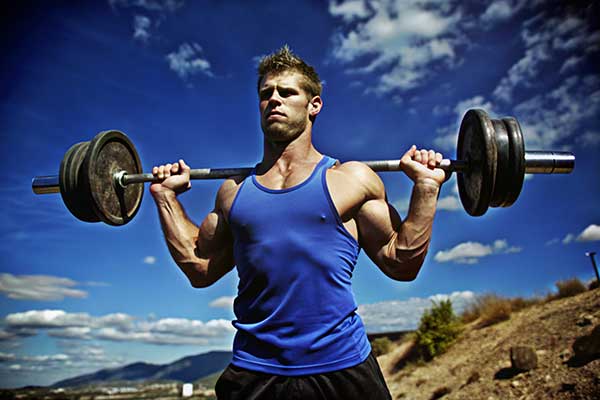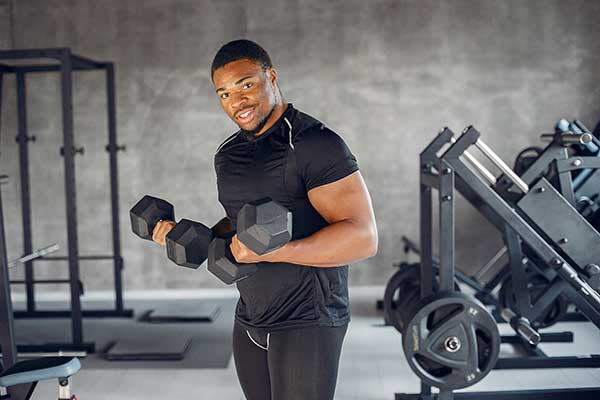How to Do Bicep Hammer Curl Exercises Using Dumbbells
Introduction to Bicep Hammer Curls
When it comes to building strong, defined arms, few exercises are as effective and versatile as the bicep hammer curl. This simple yet powerful movement targets not just your biceps but also the forearms and stabilizing muscles. If you’re ready to add a killer exercise to your routine that can enhance both strength and aesthetics, you’re in for a treat! Whether you’re new to fitness or a seasoned gym-goer, mastering this technique will elevate your workouts. Grab those dumbbells, and let’s dive into everything you need to know about performing bicep hammer curls like a pro!
Benefits of Bicep Hammer Curls
Bicep hammer curls offer a range of benefits that can elevate your workout routine. One standout advantage is their ability to target the brachialis muscle, which lies beneath the biceps brachii. This engagement helps create fuller-looking arms.
These curls also promote improved grip strength due to the neutral wrist position. A stronger grip translates into better performance in various lifts and everyday tasks.
Additionally, incorporating bicep hammer curls can enhance functional fitness. Whether you’re lifting groceries or performing sports activities, increased arm strength supports overall body mechanics.
Another noteworthy benefit is versatility. They can easily be integrated with other exercises for a comprehensive upper-body workout, making them suitable for beginners and advanced trainers alike.
They add variety to your training regimen, keeping workouts fresh and engaging while challenging different muscle groups effectively.
Equipment Needed for Bicep Hammer Curls
To get started with bicep hammer curls, the primary piece of equipment you’ll need is a set of dumbbells. Choose weights that challenge you but still allow for proper form throughout your sets.
Adjustable dumbbells are an excellent option if you’re looking to save space or gradually increase resistance as you gain strength. They offer versatility and can adapt to your fitness level.
Additionally, consider using a workout mat to provide comfort during floor exercises or stretches. A mirror can also be helpful; it allows you to monitor your posture and technique while performing the curls.
Keep a water bottle handy. Staying hydrated is crucial for optimal performance during any workout routine!
Proper Form and Technique
To perform bicep hammer curls correctly, start by standing upright with your feet shoulder-width apart. Hold a dumbbell in each hand, letting your arms hang naturally at your sides. Your palms should face each other.
As you curl the weights upward, keep your elbows close to your body. This ensures that you’re engaging the bicep muscles effectively without straining other parts of your arm.
Focus on controlled movements rather than rushing through repetitions. Lift the dumbbells until they reach shoulder level, then slowly lower them back down to the starting position.
Maintain a neutral spine throughout the exercise. Avoid leaning backward or using momentum to lift the weights; this can lead to injury and reduces muscle engagement.
Remember to breathe steadily—exhale as you lift and inhale as you lower. Proper form not only maximizes results but also keeps workouts safe and efficient.
Variations of Bicep Hammer Curls
Variations of bicep hammer curls can elevate your workout and target different muscle groups. One popular option is the seated hammer curl. By sitting down, you eliminate momentum, ensuring that your biceps do all the work.
Another effective variation is the cross-body hammer curl. This technique involves lifting the dumbbell across your body towards your opposite shoulder. It not only engages your biceps but also works on forearm strength and stability.
You might also try incline bench hammer curls. Lying back on an incline bench allows for a greater stretch in the biceps at the start of each rep, enhancing muscle activation throughout.
For those seeking a challenge, consider using resistance bands along with dumbbells for added tension during curls. Mixing these variations into your routine keeps things fresh while maximizing gains in strength and size.
Common Mistakes to Avoid
When performing bicep hammer curls, many people make a few common mistakes that can hinder progress. One frequent error is using excessive weight. Lifting too heavy can lead to poor form and increase the risk of injury.
Another mistake is swinging the weights instead of controlling them throughout the movement. This momentum diminishes the effectiveness of the exercise and shifts focus away from your biceps.
Don’t forget about body posture! Leaning back or forward compromises your stability and engages other muscle groups unnecessarily. Keep your core tight and maintain an upright position for optimal results.
Some individuals neglect to fully extend their arms at the bottom of each curl. Failing to do so limits muscle engagement, reducing overall gains. Focus on proper range of motion to maximize benefits from every rep.
Incorporating Bicep Hammer Curls into Your Workout Routine
To effectively incorporate bicep hammer curls into your workout routine, start by determining the best frequency. Aim for two to three sessions per week targeting your arms. This allows ample rest between workouts while promoting muscle growth.
You can add these curls to a dedicated arm day or integrate them into full-body workouts. Pairing them with compound movements like bench presses or squats enhances overall strength and engages multiple muscle groups.
Consider varying the weight of dumbbells based on your fitness level. Begin with lighter weights if you’re new to resistance training, gradually increasing as you build confidence and strength.
Mix up rep ranges too; aim for 8-12 reps for hypertrophy or lower reps for strength gains. Remember that consistency is key—track your progress over time to stay motivated and engaged in your fitness journey.
Precautions and Tips for Beginners
Starting any new exercise can feel overwhelming, especially with weights. Focus on your form first. Proper technique reduces the risk of injury and maximizes benefits.
Begin with lighter dumbbells to master the movement. Gradually increase weight as you become more comfortable and confident in your abilities.
Consider warming up before diving into bicep hammer curls. Simple arm circles or light cardio can help prepare your muscles for action.
Listen to your body. If something feels off, take a break or adjust your approach. Pain is not progress—discomfort is part of growth, but sharp pain signals a need for caution.
Ensure you’re incorporating rest days into your routine too. Muscles need time to recover after workouts to grow stronger and prevent burnout.
Stay hydrated throughout your sessions; water plays a vital role in muscle function and overall performance during exercises like these.
Final Thoughts
Bicep hammer curls are an effective way to strengthen your arms and enhance your overall workout routine. By incorporating this exercise, you can improve not just the size but also the stability of your biceps. Remember, consistency is key to seeing results.
Always pay attention to form and technique as you perform these curls. This will help prevent injuries and ensure you’re getting the most out of every rep. As you progress, explore different variations to keep things interesting and engage other muscle groups.
Listening to your body is crucial. If something doesn’t feel right or if you’re a beginner, take it slow and focus on mastering the movement before adding more weight.
With time and dedication, you’ll undoubtedly notice improvements in both strength and definition in your arms by doing bicep hammer curl exercises using dumbbells regularly. Embrace this challenge; it’s all part of building a stronger you!
- About the Author
- Latest Posts
Johnnie D. Jackow Sr., the founder and CEO of Total Body Fitness, Worldwide, has a long-standing career in the fitness industry. He began as a certified personal trainer in the mid-90s and soon after authored his first weight loss book in 1998. This led to the launch of Total Body Fitness, Nationwide in the USA at the same time. Johnnie gained recognition as the fitness guru of his time, running infomercials on local TV late at night in Houston, Texas. Over the years, he has helped more than 40,000 individuals from all over the world achieve their health and fitness goals. With over 60,000 hours of documented training in integrative functional medicine, he completed his PhD in human physiology in 2010. His primary objective is to assist people in reaching their health and fitness goals through alternative approaches rather than relying solely on conventional medicine and pharmaceutical drugs. Today, with almost three decades of experience under his belt, Johnnie continues to be a leader in health and fitness.







